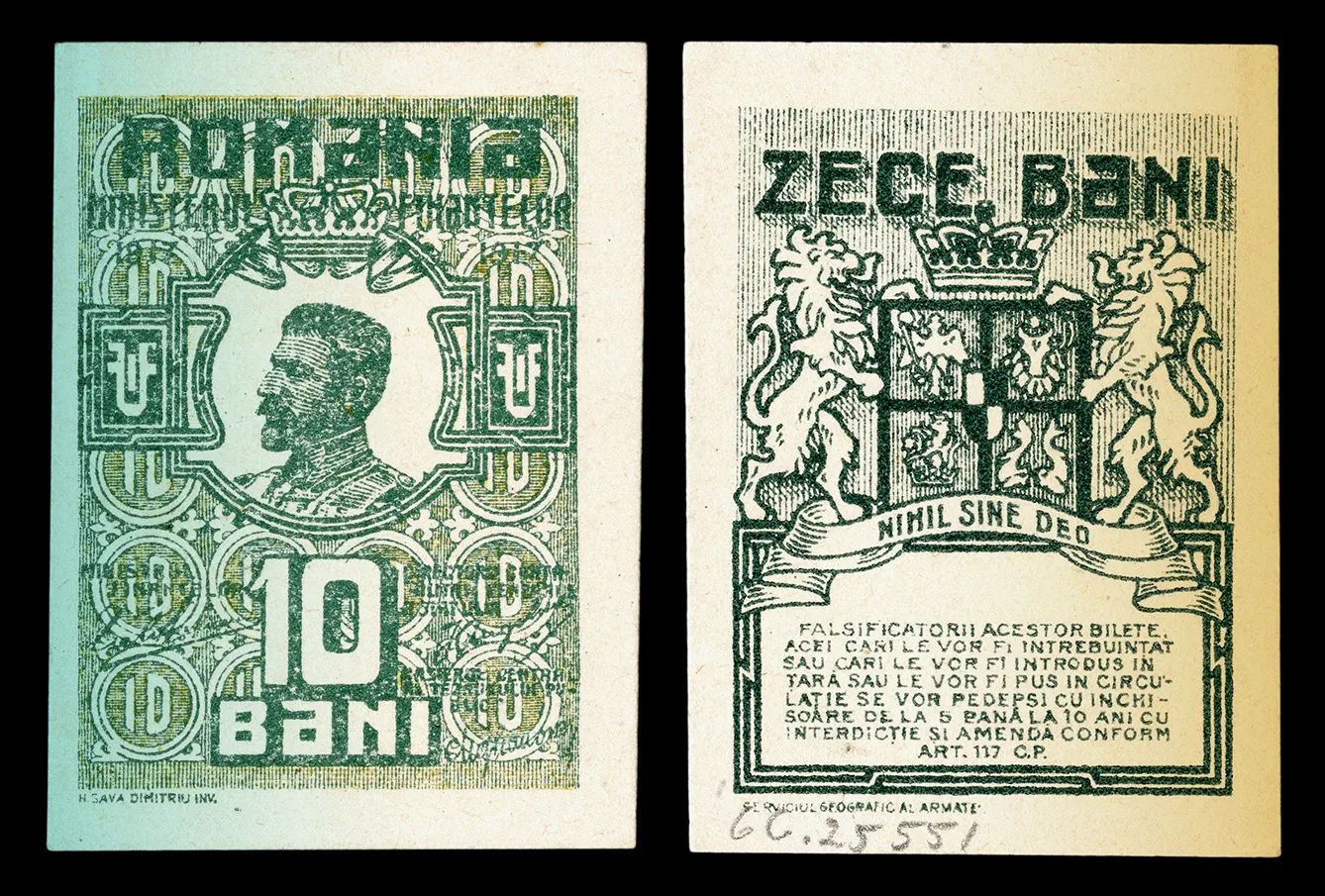After some (very) rough estimations, the answer to this dilemma is a lot. You would be able to carry around many such bills. After all, it is the smallest bill in the world! However, it wasn’t put into circulation to ease the pockets of the wealthy or set a record. The reason behind the birth of the smallest printed money in the world carries more weight than the coins ever could.
It all happened in 1917 after Romania joined the First World War. Facing a shortage of bronze and nickel, the authorities had to decide and do it fast. The desperate need for materials and lack of multiple options led to the establishment of the ten bani banknote, money that would become the world’s smallest ever known issued money.
Ten bani: not a lot of bank for your buck
The ten bani banknote took the role of the ten bani coin (bani is to Romanian lei as cent is to a dollar), though, as one may assume, it was different in many ways. However, the nominal value of the money remained the same. And while you may have been able to carry a lot of this money in your pocket, you would have needed a whole lot to be able to purchase something valuable. Their “10 bani” nominal value is the third lowest (today).
To put it in context, you would have needed ten bills to purchase something that, in the 20th century, cost 1 leu. And what could you buy with one leu? Probably a quarter of a bread loaf. However, when addressing the objective of the exchange between bronze and paper, one would immediately understand the reasoning behind printing the value on money paper. Why on such a little piece of paper, however, one can only assume.
Small banknotes, big impression
The Guinness Book of World Records calls the money “the smallest paper money in the world,” but it also hit two more records for Romania. The inscription value is the lowest to have ever been printed on Romanian money, and the banknote was the first to feature a monarch’s face. The surface made available for work may have been tiny, but it posed no challenge for the mint or its designers. One side features the portrait of King Ferdinand (1914-1927), as well as the name of the country and the nominal value of the money, while on other side presents a detailed version of the coat of arms, together with the royal aphorism “Nihil Sine Deo” and a statement against counterfeit.
The issuing of the world’s smallest paper did not come out of an ambition to popularize Romania; it came as an answer to save the little that the country had. Those war times are now over, and what’s left of the ten bani banknote is the title of the smallest ever printed money, a title which no one expected to be found in Romania.







